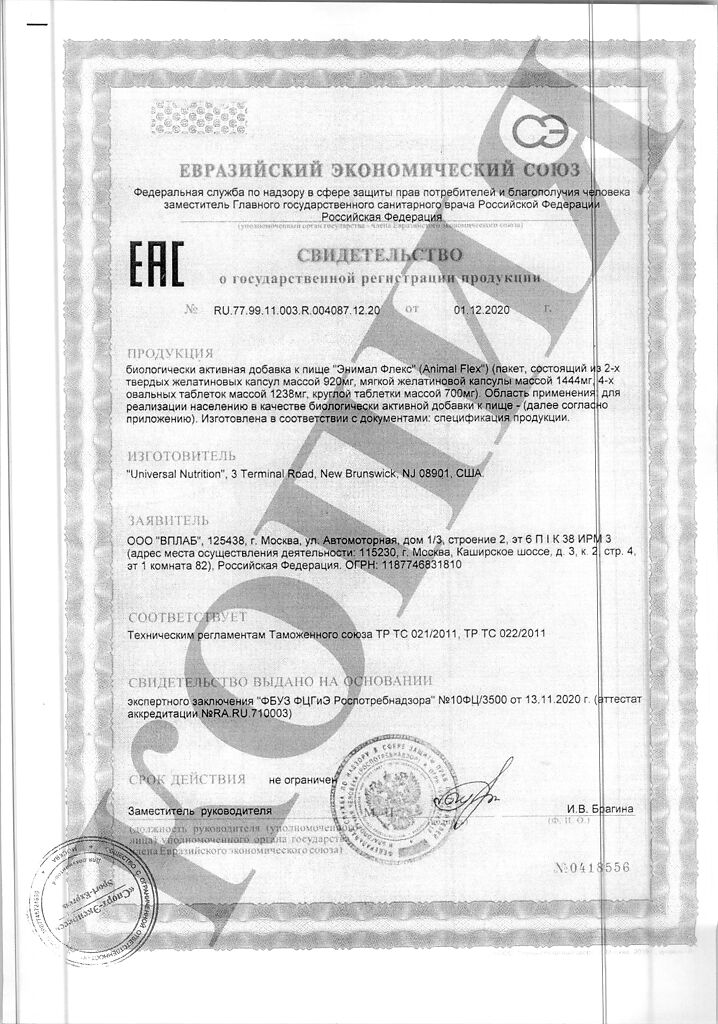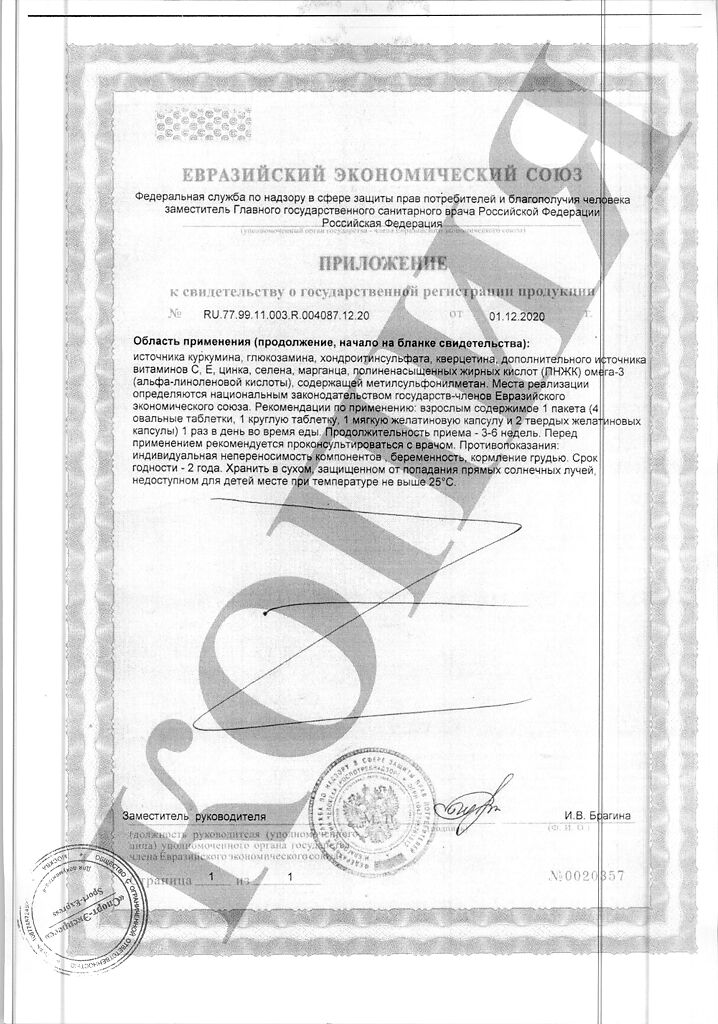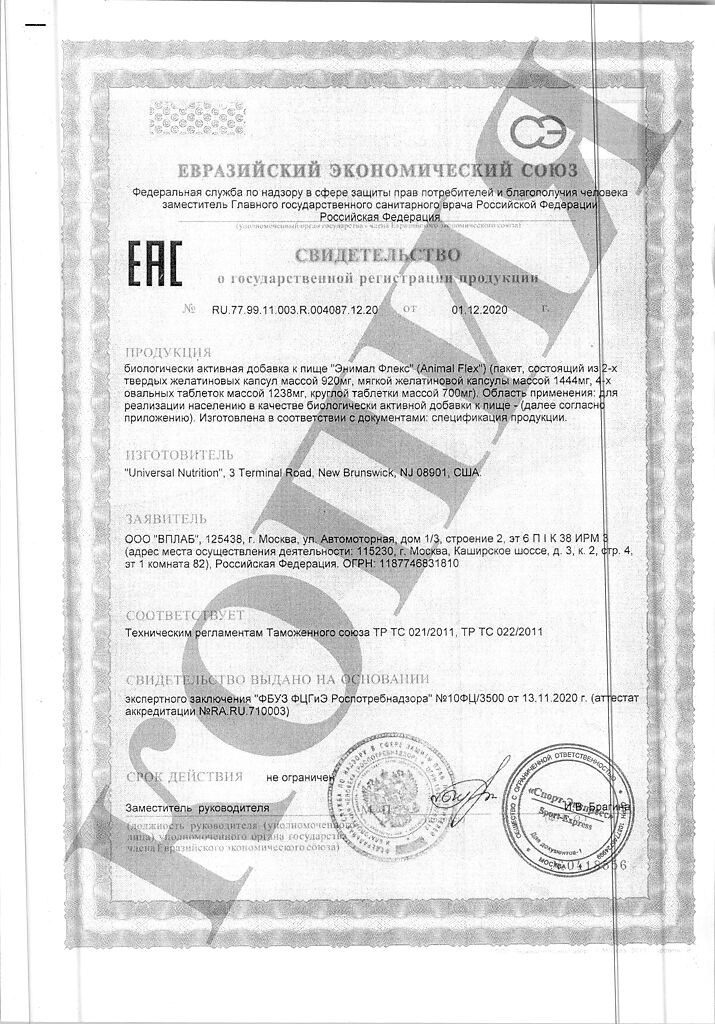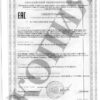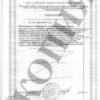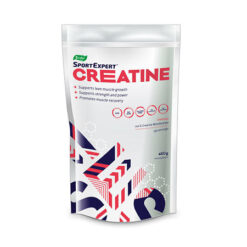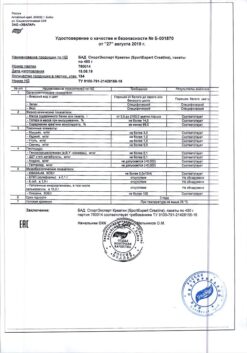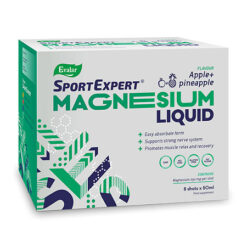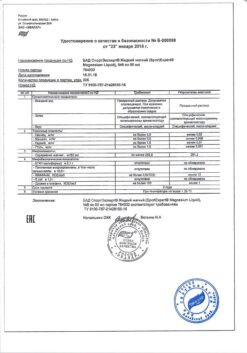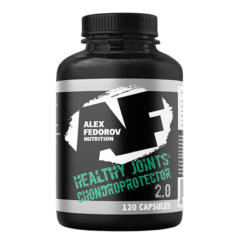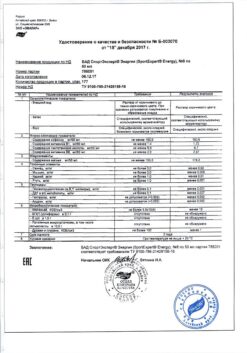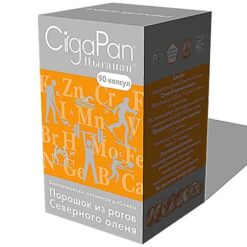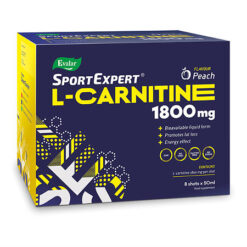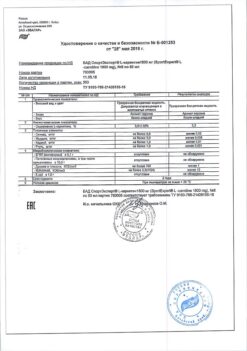No products in the cart.
Animal Flex Universal Nutritionx Glucosamine and chondroitin sachets, 44 pcs.
€1.00
Out of stock
(E-mail when Stock is available)
Description
Animal Flex is a special product from Universal Nutrition, a world-renowned manufacturer of sports nutrition. The product is designed to strengthen joints and ligaments in athletes and, moreover, cure them! Animal Flex is based on glucosamine and chondroitin, which are essential products for the regeneration of cartilage and connective tissue. They provide rapid penetration into the depths of tissues of nutrients and have analgesic effect. Just Animal Flex increases the flow of fluid to the joints, which facilitates their work, improving the “lubrication”. Another property of the drug is a strong anti-inflammatory effect. Athletes who have taken Animal Flex notice a rapid decline in tissue swelling and a rapid improvement in their well-being. It is not necessary to start taking Animal Flex when there is already a problem with ligaments or joints, it is enough to take it in half doses and as a prevention of injuries. The product has good protective properties, it protects ligaments and cartilage tissues from damage and ensures their rapid regeneration. Cetylmristoleate is an ester of cis-9-unsaturated C14-fatty acid, which acts as a lubricant for joints and helps improve the immune response in the connective tissue. It increases joint mobility by reducing the viscosity of synovial (intra-articular) fluid, which can thicken as a result of aging or disease. Cetyl myristoleate and other fatty acids, as components of muscle tissue and connective tissue, have been shown in studies to reduce inflammation. The results of clinical studies on the effectiveness of cetylmristoleate in arthritis of various etiologies, including psoriatic arthritis, indicate a significant improvement. Cetylmristoleate was well tolerated by patients. Signs of improved joint mobility appear after about 2 weeks of use, sometimes after a longer time. Most patients report a decrease in pain intensity within almost the same time frame. Those who remain on the maintenance program generally do not experience a recurrence of stiffness symptoms and joint pain. Quercetin is one of the bioflavonoids. It is found in many medicinal plants (oak, grape, hawthorn, chamomile, etc.) as well as red wine and green tea. Methylsulfonylmethane – MSM is a natural natural source of dietary organic sulfur, which is present in all living organisms. Sulfur in the form of MSM is an integral part of many endogenous proteins, hormones and other metabolically active compounds. Although MSM is found in vegetables, fruits, milk and grains, it is largely destroyed during cooking. The body needs MSM all the time. MSM forms a mobile bond between proteins. Sulfur is the fourth major nutrient in humans and animals after oxygen, water and salt. Sulfur is involved in almost every metabolic process in the body and is essential for regeneration and cellular health. Boswellia (Boswellia serrata) is a tree that grows in the mountainous regions of India. The plant contains a complex of triterpene acids and boswellia acids. Glucosamine is one of the mucopolysaccharides that the body uses to synthesize proteins and build connective tissue. Glucosamine is a natural component of joint cartilage, ligaments and joint fluid. Glucosamine stimulates the synthesis of proteoglycans (glucosaminoglycans and hyaluronic acid) synovial fluid; inhibits enzymes that cause cartilage degradation; prevents the formation of aggressive free radicals, inhibits the activity of lysosomal enzymes that degrade cartilage tissue; initiates the process of sulfur fixation in chondroitinous acid synthesis and helps normal calcium deposition in bone tissue. The main sources of glucosamine are animal by-products. Adequate intake of glucosamine is 0.5 g. Chondroitin sulfate – a high molecular weight mucopolysaccharide, is found in trace amounts in various types of connective tissue, especially rich in it cartilage tissue. Chondroitin is formed in the body from glucosamine. The polyanionic molecule chondroitin sulfate is an integral part of cartilage and is responsible for its cellular and physicochemical properties, preventing compression of the connective tissue. In addition, chondroitin sulfate serves as the basis for the synthesis of hyaluronic acid, which provides lubrication to articular surfaces. Chondroitin sulfate – the main component of proteoglycans, which together with the collagen fibers of the cartilage matrix. It inhibits the activity of enzymes that cause degradation of articular cartilage, stimulates the production of proteoglycans by chondrocytes, increases metabolic processes in the cartilage and subchondral bone, has an impact on calcium-phosphorus metabolism in the cartilage, stimulates its regeneration, is involved in the construction of the basic substance of the bone and cartilage tissue. Adequate intake of chondroitin sulfate 0.4 g. Ascorbic acid (vitamin C) is involved in the hydroxylation of proline to oxyproline in the conversion of procollagen into the main protein of connective tissue-collagen, in the hydroxylation of cholesterol, steroid hormones, is necessary for normal metabolism of tyrosine, is involved in the regulation of redox processes, carbohydrate metabolism, blood coagulation. Vitamin C improves the absorption of iron by reducing trivalent iron into divalent, which is more easily absorbed in the intestine and binds with ferritin. It is found in rose hips, sweet peppers, black currants, sea buckthorn, strawberries, citrus fruits, kiwi, cabbage, green peas, green onions, and potatoes. Adequate intake of vitamin C is 70mg. Vitamin E (tocopherols) are widely distributed in nature. They are present in all body tissues, where they are found mainly in the lipoprotein membranes of cells and subcellular organelles. Vegetable oils are the richest in tocopherols: corn oil, cottonseed oil, wheat germ oil, sunflower oil. Of vegetables sources of vitamin E are green beans, green peas, cabbage lettuce, of cereals – oats, corn, corn germ, rye, wheat germ, wheat germ flour, wheat bran Tocopherols act in living tissues as biological antioxidants. inactivating free radicals and thereby prevent the development of free-radical processes of peroxidation of unsaturated lipids. Since unsaturated lipids are an essential component of biological membranes, this function of tocopherols is important for maintaining the structural integrity and functional activity of lipoprotein cell membranes and subcellular organelles. Adequate level of consumption is 10 mg Zinc (trace element) – molecular mechanisms of action of zinc are associated with its participation in the construction and functioning of many enzymes, the number of which reaches 200: carboanhydrase, alkaline phosphatase, carboxypeptidase, alcohol dehydrogenase, transferases, lyases, hydrolases, isomerases, etc. Zinc acts as an activator of a number of enzymes and also forms complexes with nucleic acids. Zinc plays a role in biosynthesis of proteins and nucleic acids, sex hormones, antioxidant protection of cell membranes, regulation of calcium transmembrane transport. Zinc is essential for taste and smell. Natural sources of zinc are meat products, by-products, eggs, and fish. Adequate zinc intake is 15 mg. Selenium (a trace element) is a cofactor in a number of redox enzymes, where it is present alone or together with iron or molybdenum. Selenium is a strong antioxidant, a member of glutathione peroxidase, protects cells from the toxic effects of peroxide radicals. The relationship between selenium and vitamin E is explained by their interaction at different stages of organic peroxide formation. The main sources of selenium are meat, cereals, brewer’s yeast, garlic, onions, liver, dairy products, grains, and seafood. Adequate intake of selenium is 70 mcg. Manganese (microelement) participates in metabolism of proteins, fats, regulates blood sugar levels, is a part of coenzymes, participates in hematopoiesis processes, is necessary for cartilage and synovial fluid formation, and in osteosynthesis processes. The main sources of manganese are liver, cereals, beans, peas, buckwheat, peanuts, tea, coffee, green leafy vegetables. Adequate manganese intake is 2 mg. Curcuma (turmeric) Curcuma longa L.is a tropical shrub quite similar to ginger. It is a medicinal plant, spice and dye. Its homeland is South Asia. The shrub reaches a height of 0.60 to 1.0 m. Large oval leaves from light – to dark green grow directly from the rhizome. Contains a very fragrant essential oil and dye curcumin, which is insoluble in water. It is soluble in fats and alcohol. Contains a-fellandrene, zingeberen (25%), borneol, sabinene, B-curcumin. It is a source of vitamin F (linetol), polyunsaturated fatty acids (PUFAs), PUFAs are included in the lipid bilayer of cell membranes, regulating their viscosity, permeability and electrical properties. (The main representatives of the omega 3 fatty acid family are eicosapentaenoic acid (EPA), docosahexaenoic acid (DHA), alpha-linolenic acid. Eicosapentaenoic acid gives rise to prostaglandins and leukotrienes. Taken together, the metabolites of EPA are beneficial in reducing platelet aggregation. leukotrienes are anti-pain factors. DHA is included in the lipids of CNS cell biomembranes and accumulates in high concentrations in synapses, photoreceptors. Increasing the content of omega 3 family fatty acids in the structure of cell membranes significantly transforms the blood lipid profile, reducing the content of total lipidol, triglycerides. cholesterol. Adequate intake level is for omega-3-1g, omega-6-10g.
Additional information
| Manufacturer | Universal Nutrition, USA |
|---|---|
| Brand | Universal Nutrition |
Related products
Buy Animal Flex Universal Nutritionx Glucosamine and chondroitin sachets, 44 pcs. with delivery to USA, UK, Europe and over 120 other countries.

